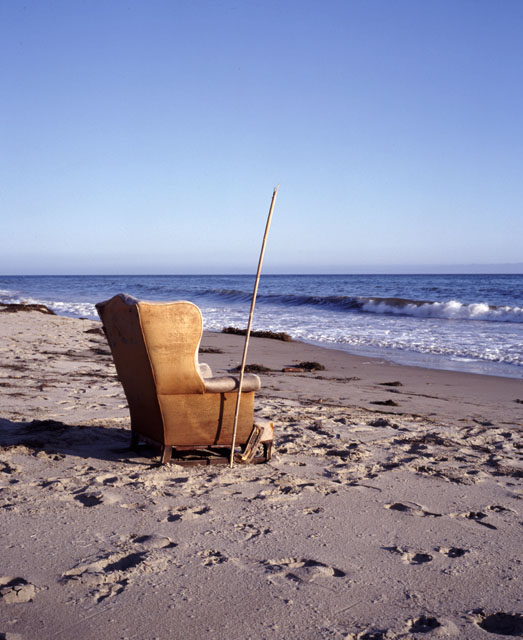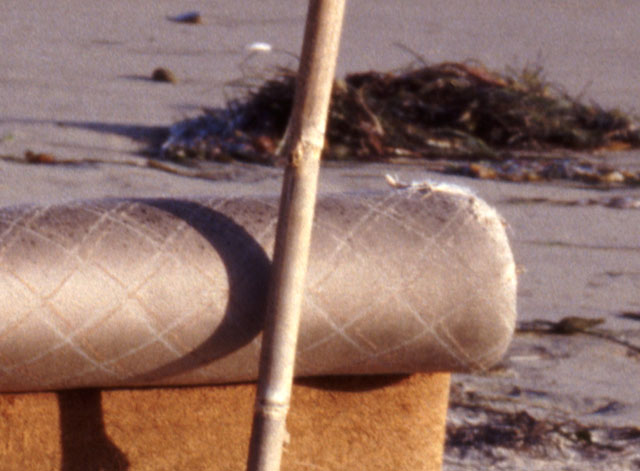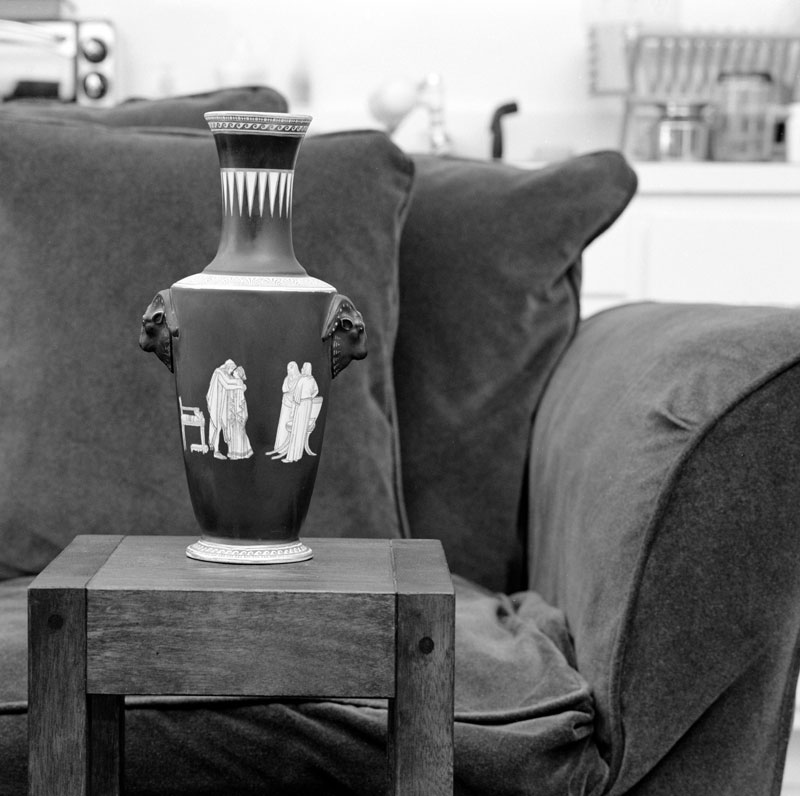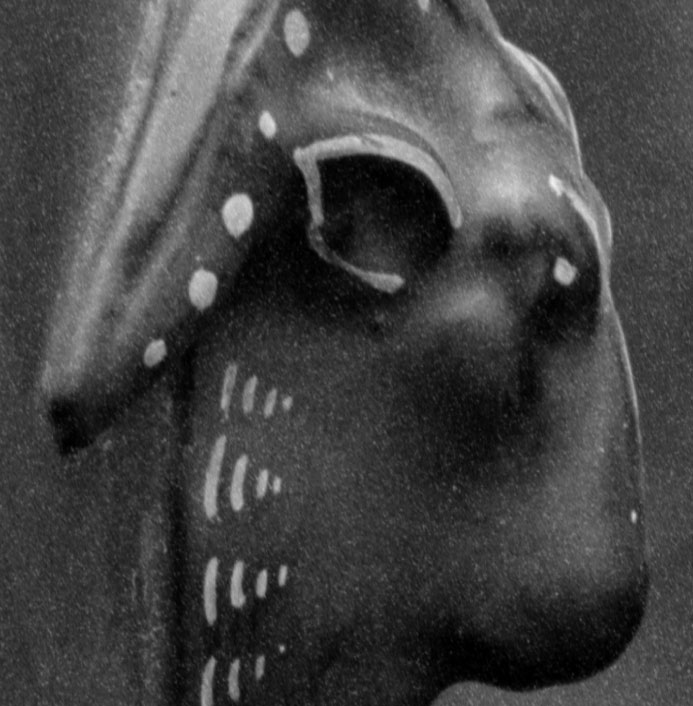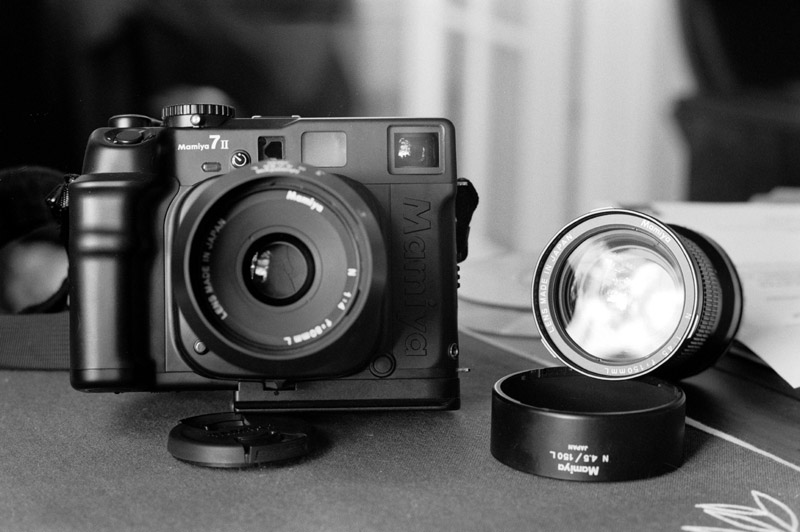
Imagine if you will, a mild-mannered Leica M7. Now imagine if that Leica smoked a bunch of crack and had a baby with a Mamiya RZ67 – the child would be the Mamiya 7II. It does not really have the grace and refinement of its Leica mother, but it has her eyes. The Mamiya 7II is a 6x7cm rangefinder camera with top-notch optics, a great finder and AE operation. Despite the giant negative, the camera remains rather small and light. It weighs in at 2.6lbs with the 80mm lens. To put this in perspective, that is actually less than an MP with a noctilux or just a few grams more than the MP with the 75mm summilux or a 90mm APO ASPH. Though the Mamiya 7II is certainly bigger than a 35mm rangefinder, it is approximately the same size as a pro SLR like the Nikon F5 or EOS 1VS. This is quite a feat when you compare it to one of Mamiya’s other 6x7cm camera, such as the RZ67 which weighs in 5.5lbs with a standard lens…not to mention that it looks like a rocket launcher.
The Mamiya’s lenses are quite remarkable, whether you are interested in MTF tests or not. Mamiya’s 80mm and 150mm lenses are among the best tested medium format lenses by any manufacturer, including Hasselblad. Photodo.com’s MTF tests rate the Mamiya 80mm f/4 at 3.9, while the 150mm f/4.5 is the highest rated medium format lens at 4.3. Among the very few lenses to test above it are the Leica 50mm f/2 summicron, Canon EF 85mm f/1.2L and highest of all at 4.7, the Contax G Planar 45mm f/2. To be considered among these lenses is a huge honor. The Leica Summicron has been unchanged since the 70s, while the Canon lens is almost identical to the FD version released in the 80s. The planar is a very old and highly corrected design. Since I own and have extensively used the 50mm summicron and 85mm f/1.2L, I cannot emphasize enough how extraordinary these lenses are. Imagine the utmost peak of resolution for 35mm and then imagine a film that is 414% larger – then you have the Mamiya 7II with 150mm lens. The quality of resolution and tonality of this camera is astonishing. Not only are the lenses terrific and the format massive, like any non-SLR camera, the Mamiya 7II benefits from the lack of vibration that is present whenever a mirror is incorporated into the design. Every time the mirror slaps into the top of the camera to allow the film to expose, it creates a good deal of noise and vibration which undermines the finest details of the image. Rangefinder cameras often have higher quality images not just because it is easier to design lenses that do not have to clear a mirror, but because they are not subject to the same vibrations in the actual camera body that SLR’s are.